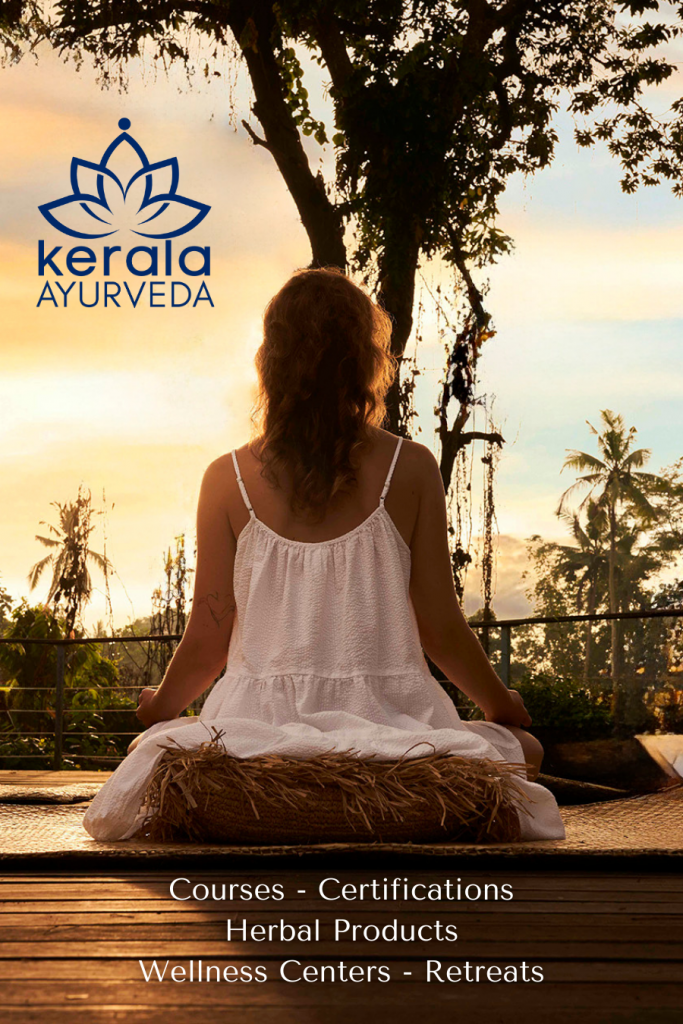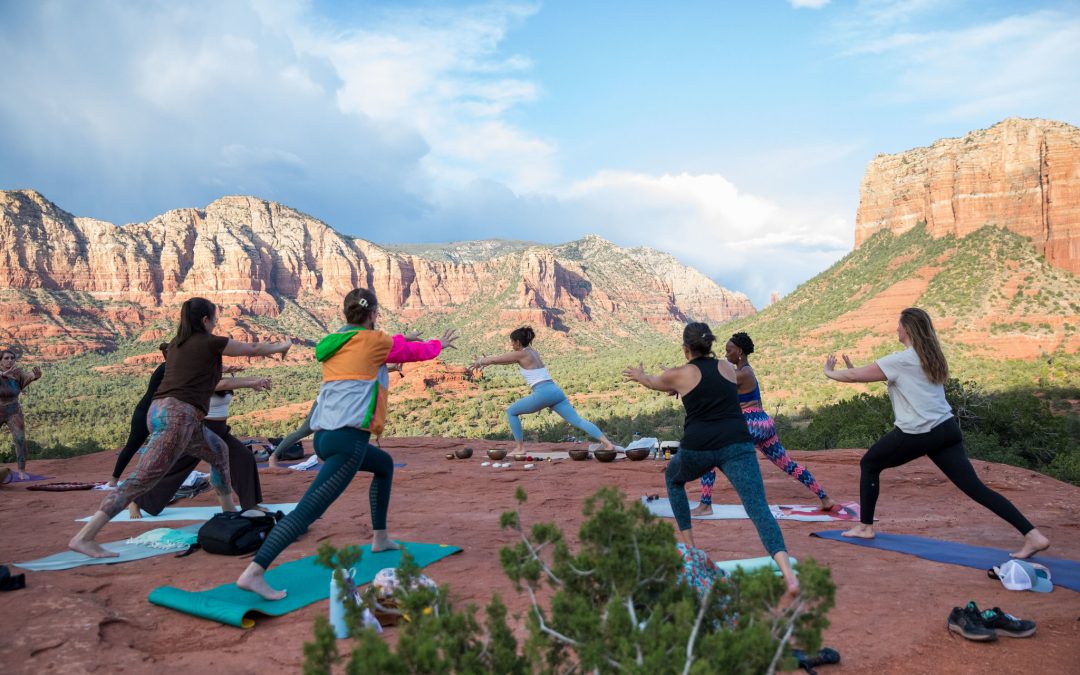
Oct 8, 2025 | Yoga Festival Experience
by Lisette Cheresson
Aparigraha, the fifth yama in Patanjali’s Yoga Sutras — one of the moral codes for living as reflected in relationship to other people and the world around us — is the instruction of non-attachment. The yama is translated as a practice in letting go, non-attachment to the material, but aparigraha can also be interpreted as a type of spiritual generosity. We are practicing aparigraha when we come together with pure-hearted intention and purpose, when we give of ourselves to our community in a meaningful and inspired way, and when we are generous with ourselves so that we may contribute to collective uplift and growth.
Yoga conferences are opportunities to practice this form of generosity. Something powerful happens when people gather to breathe or flow together with this intention. A handful of studies in the social sciences have backed up this feeling, with the claim of the so-called “Maharishi Effect” — that rates of violent crime and conflict drop concurrently with large groups of people meditating together. When we practice aparigraha as spiritual generosity, we create the conditions for a better world.
This spirit is integral to the time that we find ourselves in now. “We have the opportunity to move into an era of collective creation,” says Heather Shereé Sanders, Producer of the Sedona Yoga Festival. “As we all emerge from what has proven to be a time of deep introspection — shadow work, even — and increased self-awareness, I anticipate that ‘self care’ begins to take the shape of community care.”
According to Sanders, as we begin to integrate the effects — both grief and growth — of the last few years, this is also a time of amplified manifestation. The Sedona Yoga Festival is held in the powerful vortex landscape of Sedona, Arizona, a place, says Sanders, that “amplifies the effects of the peace and connection we cultivate when we practice together over a series of days. It is revealing in that way. Sedona helps us see that we are not in traffic, we make the traffic.” But the idea of amplified manifestation transcends the physical.
This is also a time, says Sanders, for all practitioners of yoga (and all people, really) to recognize that each breath we take is in relationship with the whole experience of the world, that in fact we are responsible for it. Happening April 23–26, 2026, SYF will be an opportunity to “imagine the beautiful, abundant, equitable, and just societies that we can co-create, and learn the tools and techniques to positively contribute to that shared intention,” says Sanders.
The practice of non-attachment asks us to let go of our limiting beliefs of what is possible, and to allow for expansiveness of expectation and experience. This kind of generosity asks us to trade our focus on the self for attention on the Self; to recognize our importance as a part of the spiritual whole. Sanders says that SYF will cultivate this by offering classes on relationship — “relationship with the breath, with the natural world, and with one another.”
What does that feel like, then, to practice aparigraha as spiritual generosity? In the microcosm of SYF, Sanders says that “we intend that each individual who attends feels deeply — truly experiences — their individual relationship to the whole.” This year, for the first time ever, the Sedona Yoga Festival will be programmed by an entire team of seekers and thinkers, from diverse backgrounds and lineages. This will allow SYF to continue its signature practice of programming teachers who are not always drawn to the festival circuit, creating an even more fertile space for participants to emerge and imagine. “We want them to release, to ground, to be inspired,” says Sanders, “and to feel joy and inspiration.”
The joy is an important aspect here, especially as heady discussions of yogic philosophy and interpretation of the Sutras can feel heavy and laden with significance. The Sedona Yoga Festival allows for transformation because it is also a space to relish in the joy of being in community, the joy of being a part of something more, and the joy of being in a body, of having a physical experience. Joy is crucial to the practice of spiritual generosity, because it then does not feel like a chore. In joy we can co-create the creative and loving space to Emerge to Imagine a better world, and be inspired by what we find when we do.
Join us for the Sedona Yoga Festival, and experience the transformation of spiritual generosity in action. April 23–26, 2026. Tickets on sale now: https://sedonayogafestival.com/purchase-tickets/
Lead image by Josh Gray
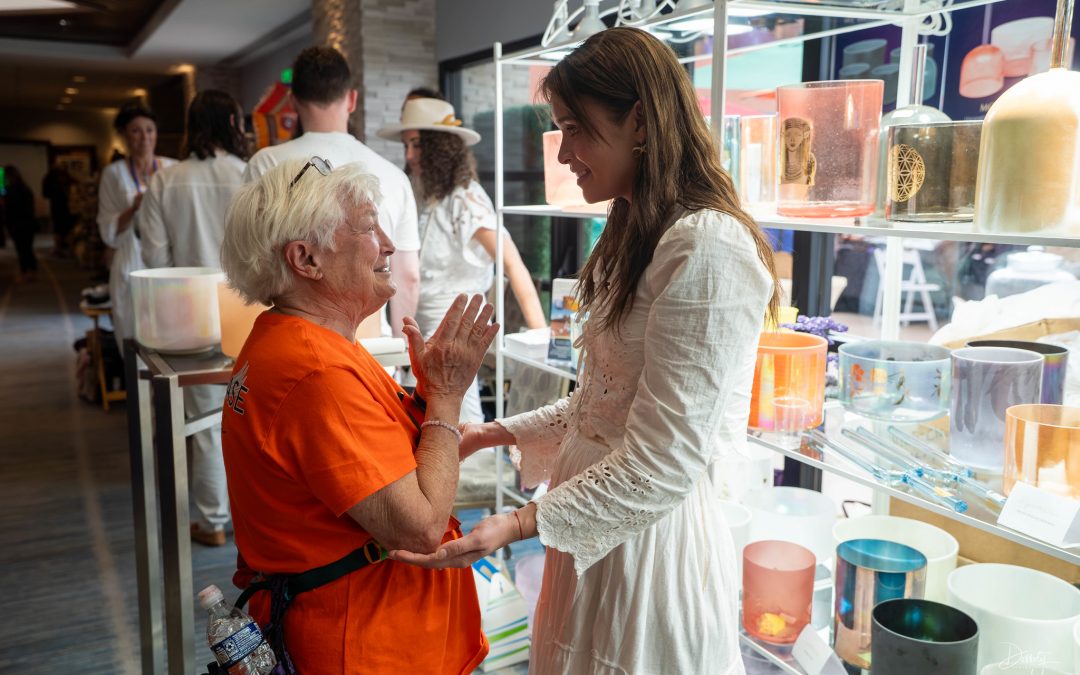
Oct 1, 2025 | Yoga Festival Experience
In this time of technological advancements that allow us to connect globally we find ourselves asking what does it really mean to be in community? The word (and the idea) may have been co-opted by brands and companies, but when it comes to yoga, the idea of community is circumscribed in the idea of sangha. Sangha carries a weightier definition than a loosely-bound group of people with common ideology. Being in sangha includes practicing in an honorable way, honoring sacred traditions. It is gathering in community that allows us to glimpse the fact that we contain multitudes… That’s what the Sedona Yoga Festival is all about.
SYF is more than a brand community. It’s a convergence of purposeful community leaders who dive into participation and creation so compassion, inspiration, and peace may spread on an unprecedented scale. Nearly 70 percent of our participants are yoga professionals, leaders who share the ethos of yoga into their local community in a wide variety of ways.
“SYF is an incredible opportunity to connect deeply with the greater yogic family,” says SYF2025 participant and presenter Niki Saccareccia, eRYT. “The carefully-curated offerings and concerts represent the multidimensionality and intersectionality of true yoga and supports professionals and students alike. As a professional, I enjoyed the panel discussions and deep dives on important topics as a leader in the field, the option for CEUs and the trauma-informed lens that many of the presenters spoke through. Movement classes are available as are land excursions, a book fair, longer workshops to go deeper into study and concerts at night make this festival a truly well rounded and enriching experience. Highly recommend you come, even if you’re new to yoga!”
SYF Producer Heather Sanders says it’s her calling in life to hold space for true community development and transformation. She believes that by participating in SYF, local leaders may be inspired, renewed, and refreshed to continue the work of spreading the principles of yoga through their individual worlds. She sees our studio partners, presenters, and other partners as the thread that carries SYF through the year and into people’s lives in a real, tangible way. ‘
“While we’re gathering for a meaningful and transformative experience, we’re converging community leaders,” says Heather. “Connecting with those leaders is what carries the thread of SYF, allows for the teachings and learnings of SYF to really take root and be carried through the local communities throughout the year.” It’s how SYF creates the ripple effect to spread the true teachings of yoga for the greater good.
We’re gathering in Sedona to create meaningful relationships and provide an authentic experience of yoga so that you may cultivate a peaceful and resilient foundation within yourself and shine it out in the world. We hope you’ll join us for this transformative gathering by participating in SYF2026 on April 23–26, 2026! Passes on sale now.
Words by Lisette Cheresson
Lead photo by Ty Dobbs

Sep 10, 2024 | Sedona Yoga, Yoga Festival Experience
Lead image by Danielle Holman; words by Lisette Cheresson
If you’ve been to SYF, you know that a large bit of the magic — the sensation of something awakening in your soul, drawing you closer to not only the divine but your personal divine purpose — is augmented by the fact that we’re here, in the energetic vortexes of Sedona. It’s said that the iron in the red rocks interacts with our bodies in ways that actually increase our energy; there’s proposed science behind the idea. While the red rocks were sacred to the Yavapai-Apache nation, according to Visit Sedona, the existence of electromagnetic vortexes was proposed and popularized in the 1970s by spiritual seekers and settlers to the area.
If you’re skeptical about the power of electromagnetic energy influencing your soul, there’s another explanation as to why Sedona feels so special. According to past SYF presenter Pete Sanders, speaking to Visit Sedona:
“Sanders explains that the neuro-stimulating red rocks enhances creative thinking and problem solving; the green cacti, agave and pines provoke a sense of hope and renewal; and the vast blue skies and winding creeks of the region incites a soothing feeling of serenity and purpose.”
Whatever the science, we can speak from experience that something intensely spiritual happens out on those red rocks — particularly when we bring our practice and our prayers. It’s why a Sedona Yoga Festival On-the-Land Immersion is so powerful.
We’re excited to announce that all 2025 Immersions will this year take place out on those sacred rocks, led by local Sedona guides. Immersions are deep-dive workshops and experiences facilitated by leaders who help you tap into the wisdom, personal truth, and healing power of specific aspects of yoga. You told us after our 2024 event that being on the land truly augmented this learning — your feedback is not only appreciated, but implemented.
We want you to experience just how nourishing an Immersion on the red rocks can be, so we’re reserving the Thursday and Monday around the festival for these special events. Be sure to add an extra day to your trip when you’re planning! Programming specifics and teachers will be available soon, but festival passes are available now. Learn more and register here.
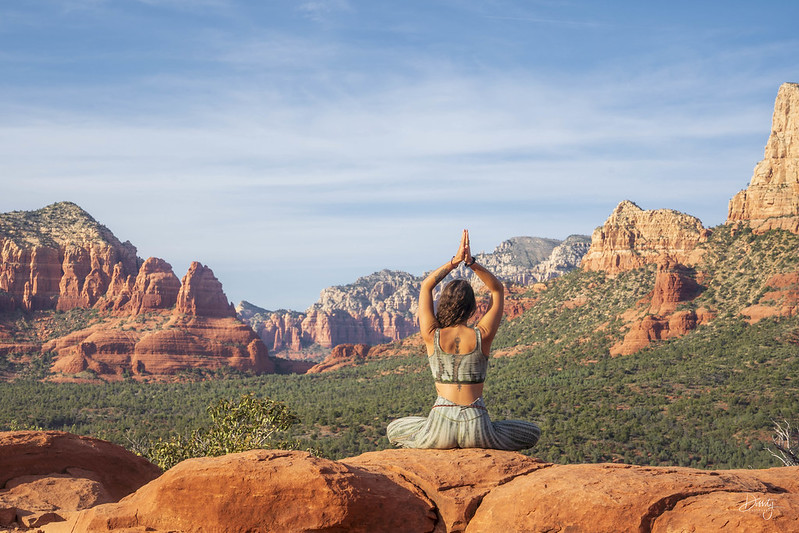
Mar 11, 2024 | Sedona Yoga, Yoga Festival Experience
Ty Dobbs is a renowned yoga photographer and conscious content creator, who has been making SYF look good since 2018. His talent lies not only in his ability to curate and create art with shape and light, but also in the energy of his soul, which creates the space for his subject’s true essence to shine through. His work has taken him all over the country, and we’re grateful that he will be returning to SYF in 2024. We sat down with Ty to learn a bit more about his process and his art.
If you’re an SYF presenter and are interested in booking Ty for a private shoot during the event, please reach out to Ty directly!
——
SYF: You’re a Texas native. In 2017, you made the move from Dallas to Southern California. How did this journey influence your photography?
Ty Dobbs (TD): This move was big for me. Having studied Joseph Campbell and The Hero’s Journey for years prior, I knew that I was facing my largest threshold yet. With that being said, my photography bloomed out of the experience because I propelled myself into a land of extensive opportunity. From sweeping National Park landscapes, to significant portraiture opportunities. My art grew rapidly once I landed in CA.
SYF: Growing up, you found joy in using cameras to ‘freeze time.’ What is it about photography that continues to captivate you?
TD: Photography always had that magical and fascinating aspect with it growing up. Now, I seek the use of photography (and videography) as a way to express oneself and share a message. I also still value photography as a “time travel hack.” It has the ability to take us back to a distant and forgotten memory… sometimes allowing us to feel the rush of emotions all over again, good or bad.
SYF: You say on your website that you attended “YouTube University.” How has being largely self-taught shaped your approach to photography?
TD: Ah yes, the great YTU. Being nearly 100% self taught means I do not have a conventional way of capturing the moment. It also means a lot of mistakes, but those mistakes are often beautiful in their own way. Instead of going through any formal schooling where I was instructed on the “good and bad,” I was able to determine my own style and answers to each of those labels.
SYF: You describe yourself as a world traveler and a student of life. How has traveling influenced your work, especially in your Vista Views and Memory Moments?
TD: Travel is one of the most potent doses of education I could have asked for on my journey of discovering my craft. It allows endless subjects, experiences, and stories that each leave a lasting mark.
I consider Vista Views and Memory Moments the two pillars of my photography work. Vista Views is my landscape portfolio and Memory Moments consists of my commercial and portrait work. Both are equally as important. Vista Views are quite literally the epitome of the subject matter, while Memory Moments have contributed to the relationships that have formed via traveling and living different places.
SYF: Having your work featured in art galleries, like in Big Bear, CA, must be exhilarating. How does it feel seeing your work displayed in such settings?
TD: It truly is exhilarating. It feels amazing! It has been a few years since my Big Bear gallery days and still my wife encourages me to find a new local gallery where we live now in Southern Utah. I’m sure there will be a time where I enter into the local gallery scene again. I believe pictures are meant to pull you in… and that is more challenging to accomplish in an Instagram post or digital screen.
SYF: As a yogi and a photographer, how do you feel these two paths intersect in your life and work?
TD: I was a photographer first, then I found yoga — and then I married the two into Yoga Photography with the help of some great mentors (ahem… Robert Sturman). The path of yoga allowed me to be more conscious with where I pointed my camera. Searching for the light became more than just a metaphor. As the Yogi within me grew stronger, so did my desire to capture people living their purpose. That has contributed to some pretty incredible international trips and experiences at festivals all around the globe!
SYF: Having photographed the Sedona Yoga Festival for several years, what are some of your most memorable moments or photographs from the festival?
TD: I will never forget my first SYF in 2018, and just being amazed by the intention and community. It felt like home. Now with each year that I return, I get to reconnect with new and old friends. It has become one of my absolute favorite annual pilgrimages.
SYF: In your opinion, what makes a great photograph, especially in the context of a vibrant event like SYF?
TD: In my opinion what makes a great photograph is being able to feel something when you look at it. In the sense of SYF, that could be the beautiful, warm, and welcoming landscape. Or a participant moved to tears from a transcendental meditation they just experienced. SYF provides so many beautiful moments to all who attend. That makes it so easy to capture the magic — if you are tuned into its frequency. ;)=
SYF: What advice would you give to aspiring photographers who wish to follow a path similar to yours?
TD: I would say to go for it! If picking up a camera and pointing it at ANYTHING makes time feel as though it stops… then photography is probably a path for you to consider. Don’t let experience, or equipment hold you back. Seek opportunities to work that Creativity muscle as often as possible. Live in that joy and be prepared for the miracles that will soon follow.
SYF: What future projects or dreams are you currently pursuing or hope to pursue?
TD: I am currently working to build a large online course database for practitioners of all styles. From Yoga to Acupuncture and even Detoxing, I have had the pleasure of working with over a dozen experts in their field. I have always found the quote “If I have seen further [than others], it is by standing on the shoulders of giants” by Newton both fascinating and inspiring.
We live in an age where we can learn and develop at increasingly rapid rates, and we can attempt to consume a career’s worth of knowledge in a rather short period of time. This realization left me feeling inspired to offer a platform for conscious entrepreneurs to share their skills. I call my platform Inspired Conscious Content. My current mission is to help colleagues discover new ways to put themselves out there!
SYF: Finally, is there a message or a thought you’d like to share with our readers and your future clients?
TD: To anyone reading that has NOT been to SYF so far, my first message is to tell you that you’re missing out by not going each and every year. The experience is similar to that of an intensive yoga retreat in some distant land. It will leave you feeling full and embodied! To anyone who would like to connect and hear more about photography, videography, or Inspired Conscious Content… Please reach out! I would love to chat and see if there is an opportunity to work together. See you all at SYF.
Join Ty and other luminaires at the 11th annual Sedona Yoga Festival, March 14–17. Passes available here!
Lead image, of course, by Ty Dobbs.
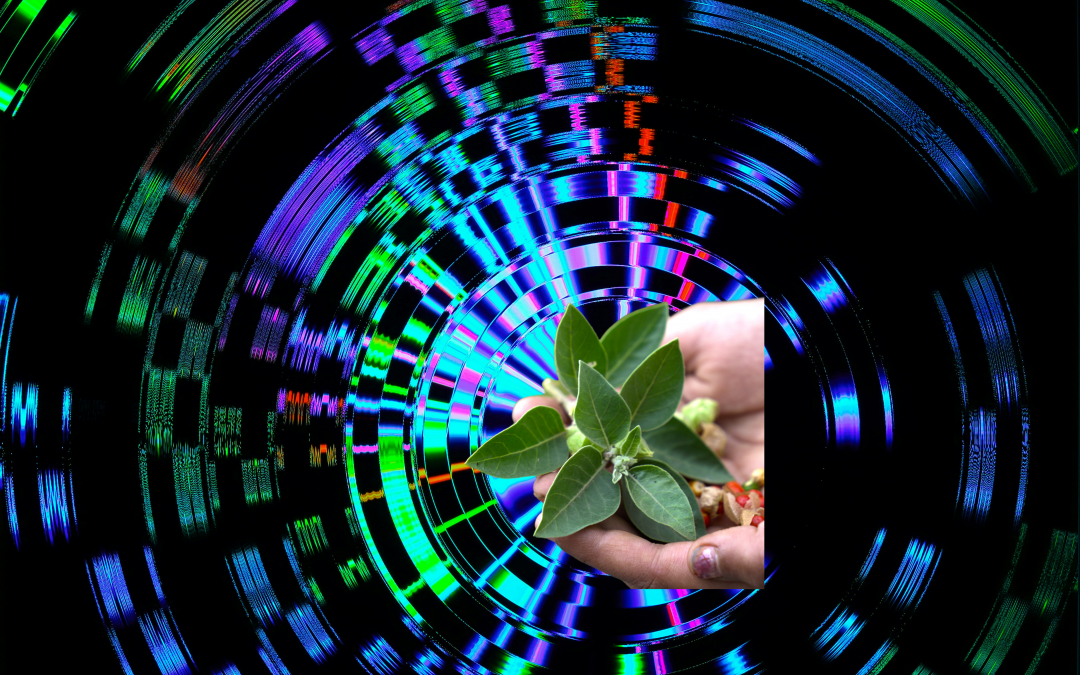
Feb 26, 2024 | Yoga Festival Experience
by Jill Robinson
Ayurveda and quantum physics might seem a strange pairing when applied to Yoga philosophy. Although these two frameworks might feel miles apart, they both speak to the importance of awakening to our interconnectedness, within our mind, body and spirit and the larger Oneness of the Cosmos.
Yoga practitioners have long known the vital link between the health of our inner and outer worlds, but only recently has Western science been able to prove our Oneness as fundamental to our universe. The implications of this merging of science and spirit are extraordinary in how we can show up as practitioners and world changers.
It’s why we’re thrilled to have Vaidya Jayarajan Kodikannath, “Dr. J”, from Kerala Ayurveda and Emanuel Kuntzelman, founding steward of the Holomovement, presenting on this topic together during the Sedona Yoga Festival this March. The language used within Ayurveda and quantum physics might differ, but they are ultimately two paths leading toward wholeness.
Interconnectedness at the Quantum Level
American physicist David Bohm, a contemporary of Einstein, believed there is an Implicate Order, which is the source of consciousness and the field holding the infinite potential of the universe. The Implicate Order expands and grows into the Explicate Order as manifest reality. Holding these two inner and outer spaces together is what Bohm defined as the ‘holomovement.’
This theory offers an explanation of how we can all be ‘one’ despite what appears to be a reality of separate beings. For Emanuel, reading Bohm’s book Wholeness and the Implicate Order was a lightbulb moment.
“I was first introduced to David Bohm back in 1984,” says Emanuel. “As I read that book, I found the term ‘holomovement,’ and for me it was the most beautiful concept I had come across in describing the oneness of consciousness. What’s more, it’s a great term, a single word describing a movement of wholeness. What could be better?”
Bohm’s theory of quantum mechanics, proposed back in 1951, has now been vindicated by the Nobel prize in physics of 2022. The award establishes non-locality, which Bohmian mechanics requires, as a “fundamental feature of the universe.” It further validates this concept of universal Oneness, bridging ancient spiritual wisdom with modern science and offers a sociological model for uniting humanity in our many pathways toward higher consciousness.
It was a defining moment for Emanuel in the importance of a social movement awakening us to our interconnectedness, guided by science and spirituality. It is imperative that the Holomovement (with a capital ‘H’), must also have a theory of change that is nourished by deep connection, compassion and purpose.
Health and Harmony Starts Within
Understanding the interconnectedness of the very building blocks of our universe is just the start, but how does this apply to our personal yoga practice and Ayurveda? At its most expansive, Yoga is “a practice of unity, an exploration of what it means to link body and breath, thoughts and movements, stillness and evolution.”
This philosophy guides us toward the integral health of mind, body and spirit. The Yoga Sutras offer wisdom for a way of living that is purposeful and mindful of our interconnectedness within our own selves that deeply affects our communities and our human family.
Ayurveda, (a Sanskrit word that means “science of life” or “knowledge of life”) is one of the world’s oldest whole-body healing systems that has long understood the necessity of holistic health. Understanding the doshas, diet essentials and daily routines of Ayurveda provides practical tools to personalize your practice and enhance the transformative power of our Yoga practice.
At the heart of this ancient healing system is understanding our cellular interconnectedness and what it means to be one cell of the interconnected whole. Like the holomovement’s unbounded wholeness, Ayurveda is a practice of interconnectedness.
“The very definition of life in Ayurveda is that nature flows through you without interruption,” says Dr. J. “You are always in relationship with everything — including fellow human beings, animals, birds, plants, nature. Your sustenance is based on an in-sync relationship with nature and its rhythms.”
Learn more about creating harmony from the inside out during the Sedona Yoga Festival! Dr. J and Emanuel will be on a panel in conversation on the similarities of Ayurveda and the Holomovement, and how they are powerful resources in personal and social transformation. Be sure to reserve your Pass before the schedule goes live to not miss a beat! Tickets available here.
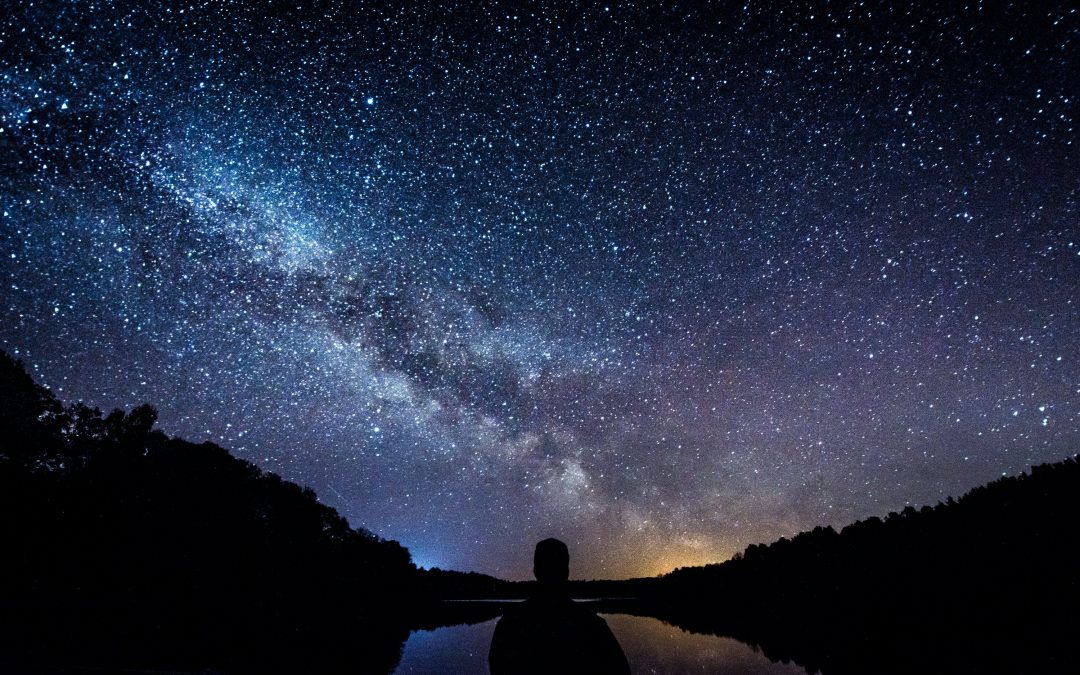
Feb 19, 2024 | Sedona Yoga Festival Teacher Feature, Yoga Festival Experience
Dennis M. Harness, Ph.D. is a self-proclaimed “Neo-Vedic or East–West Astrologer,” a professional Vedic Astrologer and lecturer who received his doctorate degree in Counseling Psychology from the California Institute of Integral Studies in San Francisco, California. For more than 30 years, Dennis has studied both Eastern and Western astrological techniques. Read on to learn more, and then study with Dennis at the Sedona Yoga Festival, March 14–17! Use code DENNIS10 for 10% off any pass.
Many of our participants are likely familiar with Western astrology and the tropical zodiac. What are the main differences between the Western and Vedic astrological systems?
I think the main difference between the two systems is that Western astrology, which is called tropical astrology, is based upon, and keeps us in touch with, the seasons; particularly the Solstice and Equinox points. Vedic astrology is more constellation-based, so it’s more of an astronomer’s view. For example, at night, if you go and look at Jupiter in the night sky, Western astrology would say that Jupiter now is in the sign of Taurus, the bull. But if you look at where Jupiter is in the night sky, you’ll see it’s right in the head of the ram in Aries. So there’s about a 23–24 degree difference between the two systems. One of the ways that the two systems connect is the aspects between the planets in both systems as well as the planetary transits.
In Vedic astrology, there’s much more emphasis on the Moon than the Sun sign. I’ve written a book titled The Nakshatras: The Lunar Mansions of Vedic Astrology, which describes the 27 divisions of the Hindu zodiac.
I trained in Western astrology and I consider myself a neo-Vedic astrologer in that I use the outer planets, Uranus, Neptune, Pluto, while many traditional Vedic astrologers don’t. For me, and this is just me personally, I think of Western astrology is like the waves on the ocean, and the Vedic system is more akin to the undercurrents, the riptides, the tsunamis in life.
Is Vedic astrology one of the Vedic sciences, like yoga or Ayurveda?
In Sanskrit, Vedic astrology is known as Jyotish, which translates to “the science of light,” bringing light into darkness. Vedic astrology can help to shed light, in a sense, in what path may be most fitting for a person’s spiritual development. For example, when in a person’s Vedic astrology chart Venus is really pronounced, you may see that person more connected with Bhakti yoga. Whereas if Saturn is strong, they may be more connected to karma yoga. Jupiter is somewhat connected with Raja yoga, because in India, Jupiter is called the guru planet. So in some ways, the planets are reflecting the different limbs of the Vedas, which is really cool.
Dr. David Fraley, a Vedic scholar who wrote one of the best books on Vedic astrology called The Astrology of the Seers, and included an entire section on these kinds of connections — particularly the chakra system and its connections to planetary energies.
So is Vedic astrology more scientifically-based?
Swami Sri Yukteswar, was a great Vedic astrologer, and was guru to Yogananda, the great saint who wrote Autobiography of a Yogi. Sri Yukteswar said it very eloquently: “A child is born at that moment in time that is in mathematical harmony with one’s soul karma. It reflect one’s unalterable past life’s and probable future results.”
I underline “probable,” because he said the message blazoned across the heavens at the moment of birth was not meant to emphasize fate, but was to arouse the soul to action or awaken the soul from slumber. So there is a mathematical, scientific aspect to it. And again, because Vedic astrology is astronomically based, there are in some ways more of a connection with a telescopic view of where the planets were.
Western astrology — and our zodiac signs — pulls deeply from archetypal characteristics. Is Vedic astrology also considering these kinds of archetypes?
It is very similar. I would say the significance of the planetary archetypes is very similar in the Western and Vedic systems. [Psychologist Carl] Jung had this beautiful quote, “The gods and goddesses no longer live on Olympus. They live in our minds as complexes and in our body as disease.” That is, the goal of archetypal psychology — and we could say archetypal astrology — is to feed the gods and goddesses. Astrology can help us to connect with the archetypes and planetary energies and befriend them.
My main teacher from Kerala, India, Chakrapani Ullal, said that Vedic astrology is 25% technique, 25% intuition, and 50% the grace of God, or we could say God or goddess. So 75% of the equation is what I call Graceland. I think it is good to have some basic training in astrological counseling as a spiritual life coach so that you can empower the client; leaving them with a sense of faith, optimism and hope for their future journey toward the divine in a way that empowers the client rather than weakening their will.
Experience the empowerment of Vedic astrology with Dennis at SYF! Tickets on sale now.







